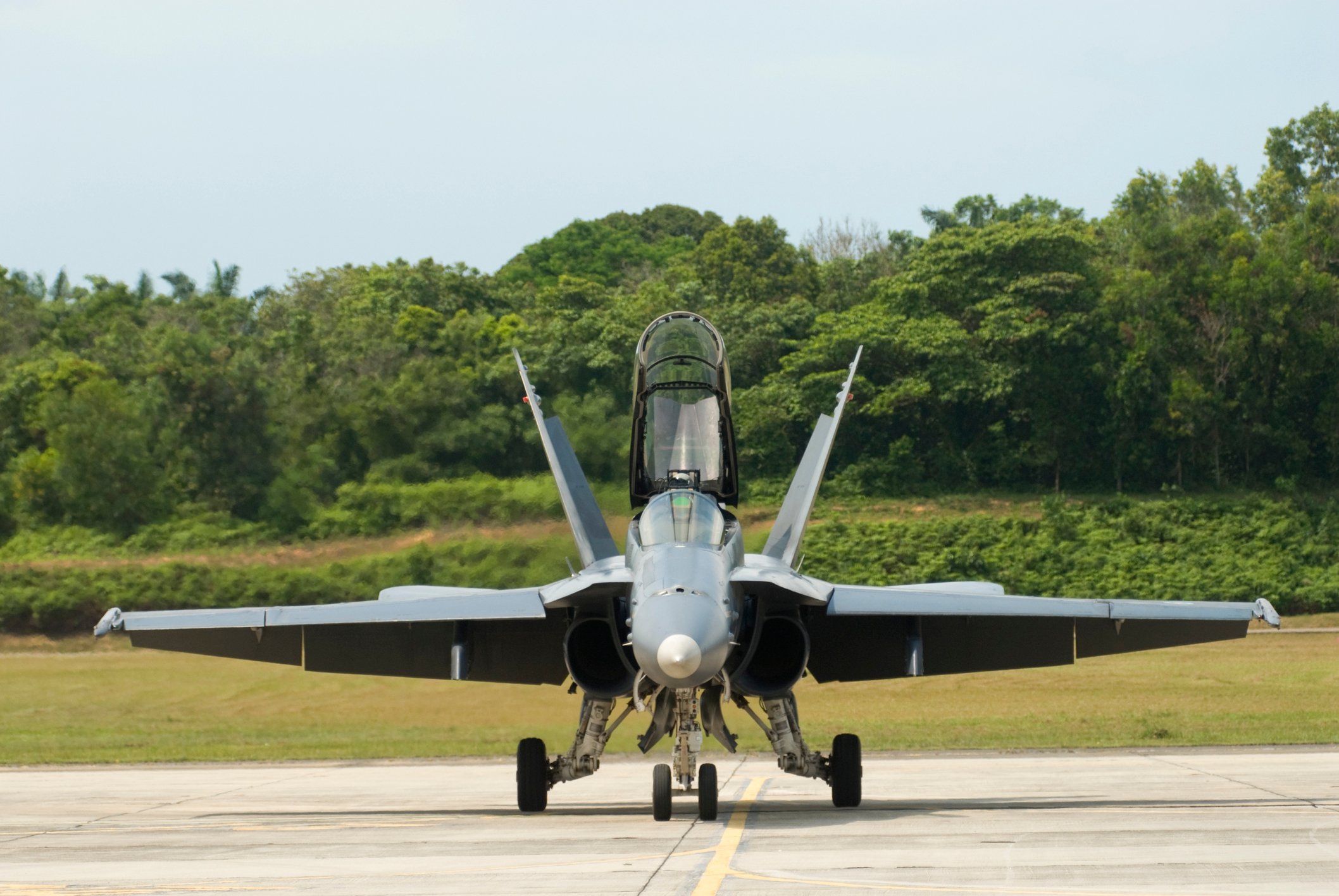According to National Geographic, a full-grown male African elephant (Loxodonta africana) masses up to 7 tons. In contrast, Stratolaunch's "Roc" -- the massive rocket-hauling carrier aircraft that the space company unveiled at the end of May -- weighs in at 250 tons.
Despite the difference in size, I suspect we'll soon discover that Stratolaunch's Roc is just a gigantic white elephant, too. Here's why.

Stratolaunch's new Roc crept out of its lair on May 31. Image source: Stratolaunch.
Introducing Paul Allen's white elephant
Stratolaunch is a creation of Microsoft co-founder Paul Allen. Its new Roc is built by Northrop Grumman (NOC 0.61%) subsidiary Scaled Composites. The plane, essentially designed as a scaled-up (pun intended) version of Orbital ATK's (OA +0.00%) Stargazer project, is intended to fly to high altitude and there release a rocket that will ignite in the sky and blast its payload the rest of the way into orbit.
Whereas Orbital ATK uses a modified Lockheed Martin (LMT +1.28%) L-1011 aircraft as its carrier aircraft, though, Stratolaunch has designed an entirely new aircraft to fulfill this purpose. A beast of a machine with a 385-foot wingspan (wider than a football field is long) and sporting six Pratt & Whitney PW4000 engines (the same engines that power a Boeing (BA +1.94%) 747), the Roc stands 50 feet tall and measures 238 feet from nose to tail. It's so big, it needs 28 wheels to support its weight as it trundles down the runway.
In flight, the Roc is designed to sling a rocket between its two fuselages, carry it to 35,000 feet, and there release it to blast off into space -- at which point the Roc would return to land and load up with another rocket for launch.
Regarding rockets
Speaking of that rocket, there is one small issue with Stratolaunch: There don't currently seem to be any rockets of the size it wants to carry that are suitable for air launch.
The Roc is designed to carry rockets weighing up to 275 tons, you see. (Thus, between the plane's 250-ton empty weight, 125 tons of aviation fuel for the plane itself, and a further 275 tons for the payload, the Roc would weigh 650 tons at takeoff -- about the same mass as an Airbus A380 fully loaded with passengers.) But Stratolaunch hasn't yet found a rocket of that size that can launch safely from midair.
Failing that, the latest plan is to have Stratolaunch instead carry "multiple" (three are depicted in Stratolaunch's artist depictions) Orbital ATK Pegasus XL rockets and deploy them in series.
Here's another problem with Stratolaunch: Using a huge airplane to help launch even "multiple" small rockets seems to defeat the purpose of building the huge airplane in the first place. After all, there are already at least two companies (Virgin Orbital and Orbital ATK itself) with aircraft that are suitable for air-launching small satellite rockets.
Plus, Orbital's Pegasus XL rockets only mass about 25 tons each. So even if Roc can carry and launch three Pegasus XL rockets at a time, in so doing, it would utilize only 75 out of its 275-ton lift capacity. Simply put, Roc is overkill for this purpose.
A solution in search of a problem
This, in turn, leads us to consider another problem with Stratolaunch. Namely, the company boasts that Roc has a "payload" capacity of 275 tons -- which sounds like a lot. After all, the biggest payload that SpaceX's famous Falcon 9 reusable rocket can carry to low earth orbit is 22.8 tons. The Lockheed Martin-designed Atlas V rocket operated by United Launch Alliance maxes out at 18.85 tons, while the Boeing-designed Delta IV tips the scales at 28.37 tons of capacity.
But this doesn't mean that Stratolaunch's Roc is 10 times more capable than its nearest ground-launched rocket competitor -- far from it. You see, the Roc's "275-ton payload" refers to the size of the rocket the Roc will carry. The ultimate payload -- the satellite that that rocket itself would put in orbit, is much smaller.
How much smaller? Multiply the Pegasus XL's 0.443-ton payload times the three Pegasi the Roc might be able to carry, and it looks like the most payload Roc can put in orbit is about 1.3 tons -- about 93% less than Lockheed's Atlas, 94% less than SpaceX's Falcon, and 95% less than Boeing's Delta.
Better never than late?
With stats like that, it's hard to see how Stratolaunch can hope to compete with any of these companies. And it gets worse. At the same time as Stratolaunch is trying to compete with SpaceX, Boeing, and Lockheed in the market for large satellite launches, space companies are gravitating toward launching more, smaller satellites instead -- and a new generation of small space-launch companies is springing up to serve this market.
So, what's the upshot for investors here? At last report, Stratolaunch was believed to have invested $300 million in getting the Roc ready for testing. As of last week, this investment has finally produced a plane, but Stratolaunch isn't expected to actually be ready to launch rockets before 2019 at the earliest.
By then, the Roc could already be obsolete -- and en route to extinction.







